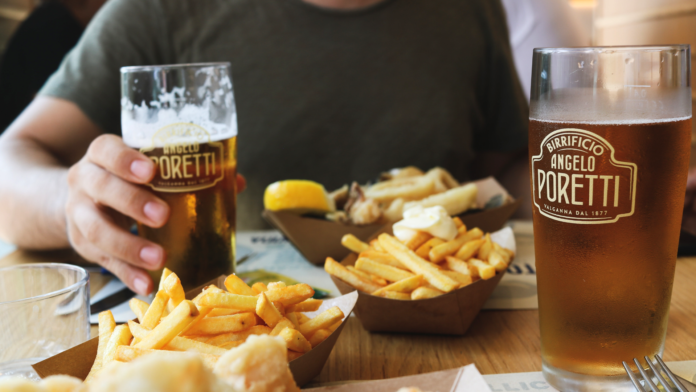In Canada, nutrition labelling on most packaged food is mandatory. Pick up a bag of chips and it tells you how many servings per bag, and how many calories per serving. The same goes for sodas. But what about alcohol?
Despite the health and social costs of alcohol, alcoholic drinks are one of the few products exempt from calorie labelling laws. But as the number of Canadians who are overweight or obese continues to grow, a team of researchers at the University of Victoria are making the case for change.
Led by Adam Sherk, a post-doctoral fellow at the Canadian Institute for Substance Use Research, the team have calculated just how many calories we’re drinking.
Using Statistics Canada sales data, with an additional 20% allowance for alcohol brewed at home or obtained from other sources, the researchers have estimated provincial consumption in four categories: beer; wine; spirits; and ciders, coolers, and other alcohol.
For each category, the researchers used an average calorie value per standard drink (13.6 grams of “pure” alcohol). For example, a 12 oz bottle of 5% beer is 140 calories, and a 5 oz glass of 12% wine is 100 calories. This was compared to Canada’s Food Guide’s recommended daily calorie intake for adults, 2,500 kcal for men and 1,950 kcal for women.
When you compare the number of calories we drink to the amount amount we need, the results are sobering. The average drinker consumes 250 calories, or 11% of their daily energy requirements, via alcohol — every single day. For men, that’s 13.3% of their daily energy needs (333 calories), and for women, 8.2% (159 calories) daily. And that’s before you add calories from non-alcoholic mixers, or the slice of pizza you grab on the way home.
“That’s like eating an extra bag of chips every day,” explained Sherk. “If we look at binge drinking, or having something like four or five drinks on one occasion, it’s actually closer to 550 calories, which is about 25% of the recommended daily caloric intake. That’s the equivalent of a double cheeseburger with all the fixings.”
Nationwide, beer is the biggest offender accounting for over half of calories drunk (52.7%). That’s followed by wine (20.8%), spirits (19.8%), and ciders, coolers, and other alcohol (6.7%).
The numbers are substantial, and surprisingly consistent. Only drinkers in New Brunswick consume less than 10% of their energy needs from alcohol (9.9%). At the other end of the pack, drinkers in Newfoundland and Labrador get 12.5% of their energy needs from alcohol.
Of course, many of us consume more than the recommended number of calories per day. But as nutritionally empty calories, alcohol seems like a prime target for those watching their energy intake.
With this in mind, the researchers suggest adding three pieces of information to alcohol containers: the total number of calories, the number of Canadian standard drinks, and the number of calories per standard drink.
This relatively simple action could help drinkers make informed choices, understand the impact of what they are drinking, and perhaps even moderate their intake.





































